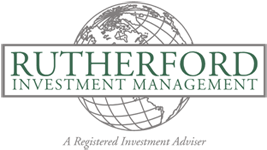Published Aug 5, 2022

Powered by earnings, equity markets surged in July even though the Federal Reserve raised interest rates by 0.75 basis points for two consecutive months. Are we in a bear market rally, or something more sustainable? The S&P was up 9.1 percent for the month, but still down 13 percent year to date. The market gained support from three factors: comments by Fed Chairman Jerome Powell and Treasury Secretary Janet Yellen that the economy is not in a recession, weaker jobs growth in July than in June, and strong corporate earnings reports.
The labor market remains tight. According to Dow Jones, 250,000 jobs were added in July, but that bullish indicator was countered by the fact that more jobs – 372,000 – were created in the prior month of June. This indicator of a slowing economy was taken as a good sign, because it shows that the Fed is achieving its goal of slowing the economy. A slowing economy might mean less aggressive rate increases. If rate increases are slowing, it might mean a shorter or shallower recession, because the Fed will have to pivot to smaller rate increases or none at all. These are hopeful signs. According to the St. Louis Fed president, it is hard to call a recession with a strong and growing jobs market.
The market had been pricing in armageddon, with pessimism running high. To put in a bottom for the market, we usually need panic selling. In spite of all the pessimism, we have yet to see panic. Conversely, the rally has caught some investors with short positions in the market, which would be bullish since they may have to buy stocks to cover their positions. A short position in a rising market can be painful.
The S&P was down 20 percent in the first six months of 2022. However, bear markets usually result in a downturn of 30 percent, which the tech-heavy NASDAQ has experienced, but not yet the S&P, suggesting we still have more room to the downside.
The Institute of Supply Management index for July shows an economy still expanding, which is good news, since we would not be in a recession. However, it is also bad news, because it means that the Fed may still think rates should be raised more.
A key factor in market direction is earnings. Analysts are projecting earnings of $226.92 per share by the end of this year or one-year growth of 10.5 percent, with further growth of 8.69 percent by the end of 2023, according to Fact Sheet. In the past eight recessions in the U.S., earnings were down 14 percent, according to Sharon Bell, senior European equity strategist at Goldman Sachs.
Slowing earnings could mean lower interest rates, which is bullish for the market.
Another key factor is inflation, which is why the Fed has been so aggressive in raising rates. U.S. inflation soared 9.1 percent from a year ago – the fastest pace since November 1981. If inflation can be tamed, one can expect the Fed to slow its rate increases. What the Fed does matters.
Wolfe Research expects this bear market rally to be short-lived. It believes the current rally is attributable to market sentiment being so negative that the market was trading at extreme lows, which set the market up for a rally. Wolfe Research believes that the market will remain choppy. It does not see the markets bottoming over the intermediate term until Fed moves become more transparent.
But the Fed’s mystery is part of its power, so volatility will continue and maybe even worsen. If the Fed tightens monetary policy so much that it crushes inflation, it will spark a deep recession. If the Fed tightens policy only moderately, the recession will be milder but not resolve the inflation problem. The late Paul Volcker, when he was Fed chair, chose the more aggressive route, throttling inflation, but at a heavy price. Subsequent chairmen have followed a more nuanced route and tippy-toed around the elephant in the room.
Alan Greenspan famously employed a more supportive route with his “Greenspan put” and simply deferred any harsh medicine, which led to a severe market decline and the “Great Recession” of 2007-2009. Ouch! Either way, we have a price to pay for the government’s profligate spending and the Fed’s easy money policy.
The U.S. money supply grew by about 6.4 trillion dollars between March 2020 and the end of 2021. This was a massive and unprecedented increase in only 22 months leading up to this inflationary cycle. The money supply growth of 2020 was the greatest in the 150-year history of the data according to Jeremy Siegel, professor emeritus of finance at the Wharton School of the University of Pennsylvania. With interest rates near zero, this meant more money chasing a sometimes static (think oil), sometimes shrinking supply of goods and services (think food). Inflation was sure to follow.
An investor can try to outguess these vicissitudes or be patient while the problems resolve. We recommend patience. We recommend a long-term view. Ask yourself whether you believe the market will be lower or higher one year from now. We think the market will be higher, so we stay invested. Sometimes, for short periods, that approach doesn’t look so smart; however, history says it will be right in the long term, if one is patient.
William Rutherford is the founder and portfolio manager of Portland-based Rutherford Investment Management. Contact him at 888-755-6546 or wrutherford@rutherfordinvestment.com. Information herein is from sources believed to be reliable, but accuracy and completeness cannot be guaranteed. Investment involves risk and may result in losses.
The opinions, beliefs and viewpoints expressed in the preceding commentary are those of the author and do not necessarily reflect the opinions, beliefs and viewpoints of the Daily Journal of Commerce or its editors. Neither the author nor the DJC guarantees the accuracy or completeness of any information published herein.
